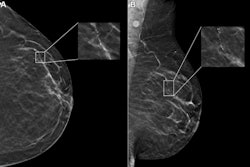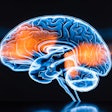Achieving health equity with AI in imaging requires overcoming barriers to how the technology analyzes people, according to a presentation given at the American Roentgen Ray Society (ARRS) annual meeting.
In her presentation, Noushin Yahyavi, MD, from the University of Maryland in Baltimore discussed ways that stakeholders in imaging AI, including radiology departments and AI vendors, can better promote health equity with the technology.
“Biased data results in biased AI models,” Yahyavi said.
Proponents of AI in radiology highlight the technology’s potential in assistant radiologists with image interpretation as well as improving patient care. However, bias in imaging AI continues to be a hindrance for the technology’s clinical utility, with previous studies showing the technology struggles in accuracy for historically underserved populations. Yahyavi said that the algorithms used in AI are only as good as the underlying training data.
“The issue is that the AI systems can amplify the existing human bias, and they could have poorer performance in patients who are historically underserved,” she said. “The reason behind that mostly is because these algorithms are trained on unbalanced data sets.”
For example, not including demographic information such as race, ethnicity, and insurance status can lead to consequences such as misdiagnosed findings and inappropriate treatment strategies, Yahyavi said.
She suggested that radiology departments should do research on AI software they’re interested in implementing, making sure the datasets used for training are fair and include demographic information.
Other methods for mitigating bias in models include using deep transfer learning, which transfers knowledge learned from majority data into minority datasets, as well as visual transformers and two-step adversarial debiasing.
However, it’s not all doom and gloom for AI and its current limitations. Yahyavi said that Yahyavi in her talk outlined opportunities for AI and health equity: automated health literacy, missed care opportunities, overcoming the language barrier, and predictive analytics.
Some examples include sending automatic reminders to patients to attend screening appointments, translating conversations between patients and clinicians, and using electronic health records and imaging data to improve treatment strategies.
Yahyavi ended her presentation by encouraging attendees to join the Radiology Health Equity Coalition, which aims to address disparities and inequities in healthcare.
“We do see a need to positively impact healthcare equity in radiology,” Yahyavi said.



















